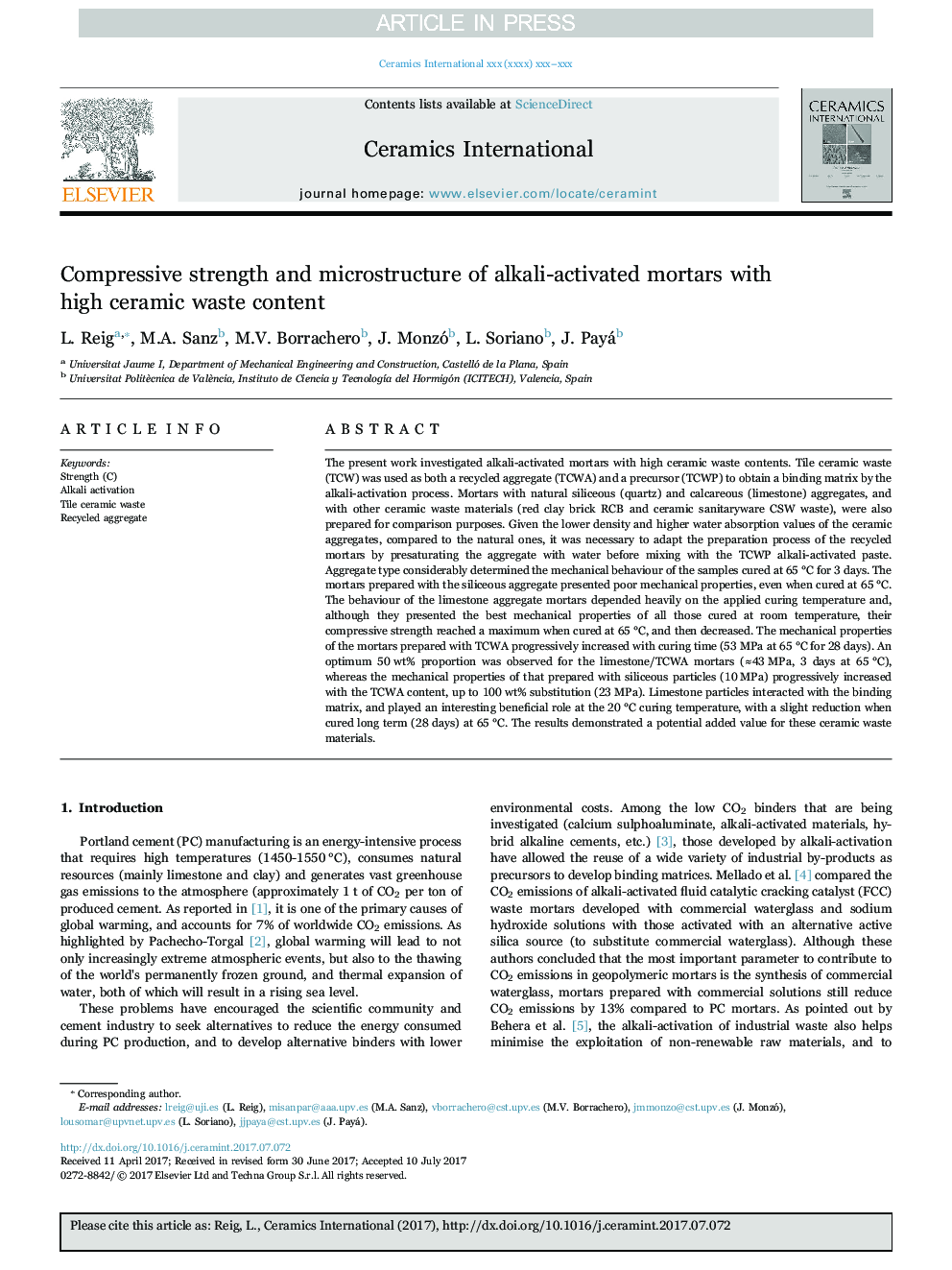| کد مقاله | کد نشریه | سال انتشار | مقاله انگلیسی | نسخه تمام متن |
|---|---|---|---|---|
| 5437867 | 1398178 | 2017 | 13 صفحه PDF | دانلود رایگان |
عنوان انگلیسی مقاله ISI
Compressive strength and microstructure of alkali-activated mortars with high ceramic waste content
ترجمه فارسی عنوان
استحکام فشاری و ریز ساختار ملات فعال قلیایی با مواد زائد سرامیکی
دانلود مقاله + سفارش ترجمه
دانلود مقاله ISI انگلیسی
رایگان برای ایرانیان
موضوعات مرتبط
مهندسی و علوم پایه
مهندسی مواد
سرامیک و کامپوزیت
چکیده انگلیسی
The present work investigated alkali-activated mortars with high ceramic waste contents. Tile ceramic waste (TCW) was used as both a recycled aggregate (TCWA) and a precursor (TCWP) to obtain a binding matrix by the alkali-activation process. Mortars with natural siliceous (quartz) and calcareous (limestone) aggregates, and with other ceramic waste materials (red clay brick RCB and ceramic sanitaryware CSW waste), were also prepared for comparison purposes. Given the lower density and higher water absorption values of the ceramic aggregates, compared to the natural ones, it was necessary to adapt the preparation process of the recycled mortars by presaturating the aggregate with water before mixing with the TCWP alkali-activated paste. Aggregate type considerably determined the mechanical behaviour of the samples cured at 65 °C for 3 days. The mortars prepared with the siliceous aggregate presented poor mechanical properties, even when cured at 65 °C. The behaviour of the limestone aggregate mortars depended heavily on the applied curing temperature and, although they presented the best mechanical properties of all those cured at room temperature, their compressive strength reached a maximum when cured at 65 °C, and then decreased. The mechanical properties of the mortars prepared with TCWA progressively increased with curing time (53 MPa at 65 °C for 28 days). An optimum 50 wt% proportion was observed for the limestone/TCWA mortars (â43 MPa, 3 days at 65 °C), whereas the mechanical properties of that prepared with siliceous particles (10 MPa) progressively increased with the TCWA content, up to 100 wt% substitution (23 MPa). Limestone particles interacted with the binding matrix, and played an interesting beneficial role at the 20 °C curing temperature, with a slight reduction when cured long term (28 days) at 65 °C. The results demonstrated a potential added value for these ceramic waste materials.
ناشر
Database: Elsevier - ScienceDirect (ساینس دایرکت)
Journal: Ceramics International - Volume 43, Issue 16, November 2017, Pages 13622-13634
Journal: Ceramics International - Volume 43, Issue 16, November 2017, Pages 13622-13634
نویسندگان
L. Reig, M.A. Sanz, M.V. Borrachero, J. Monzó, L. Soriano, J. Payá,
